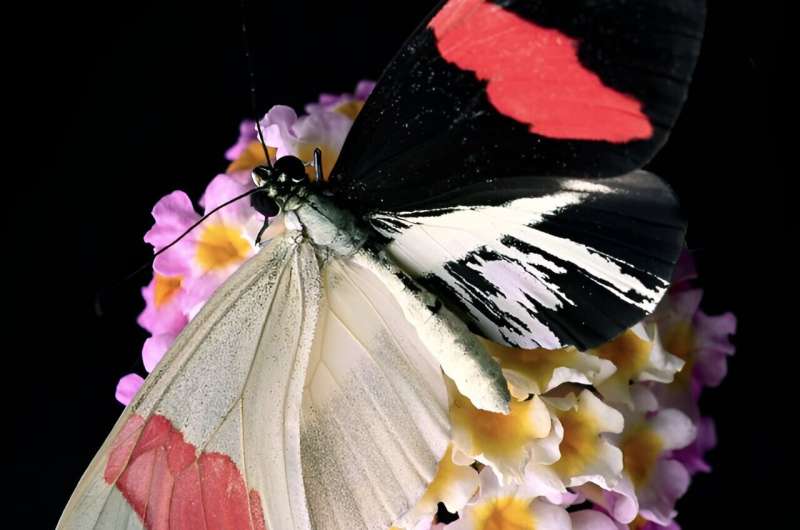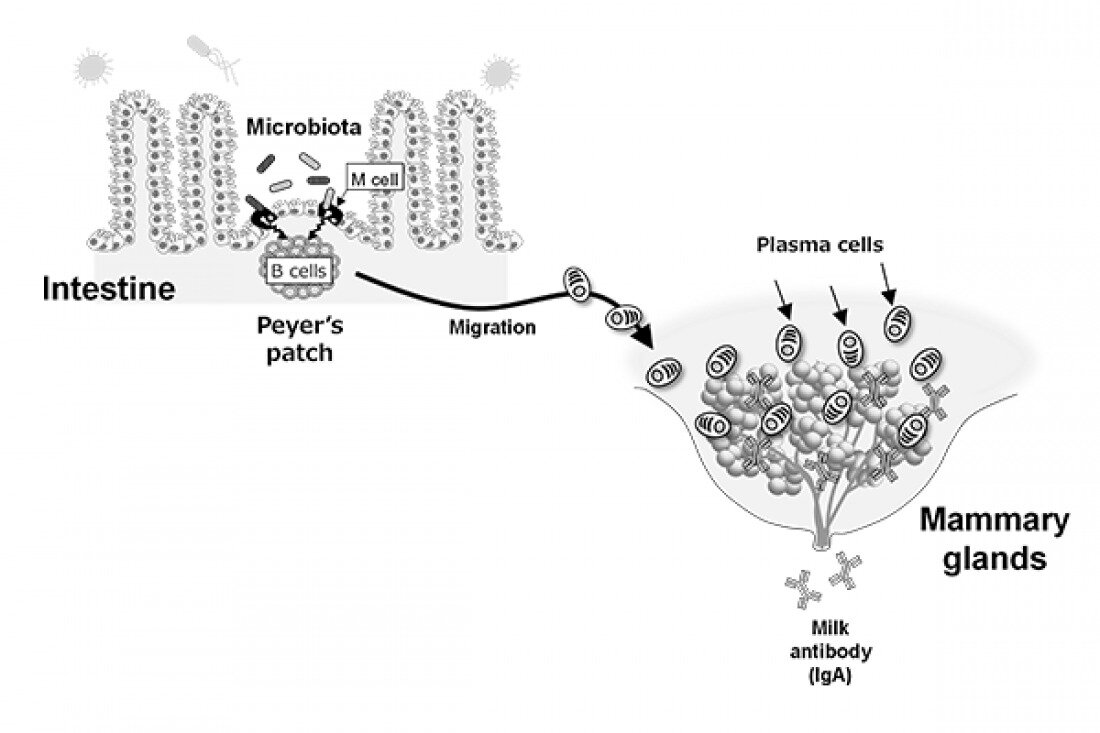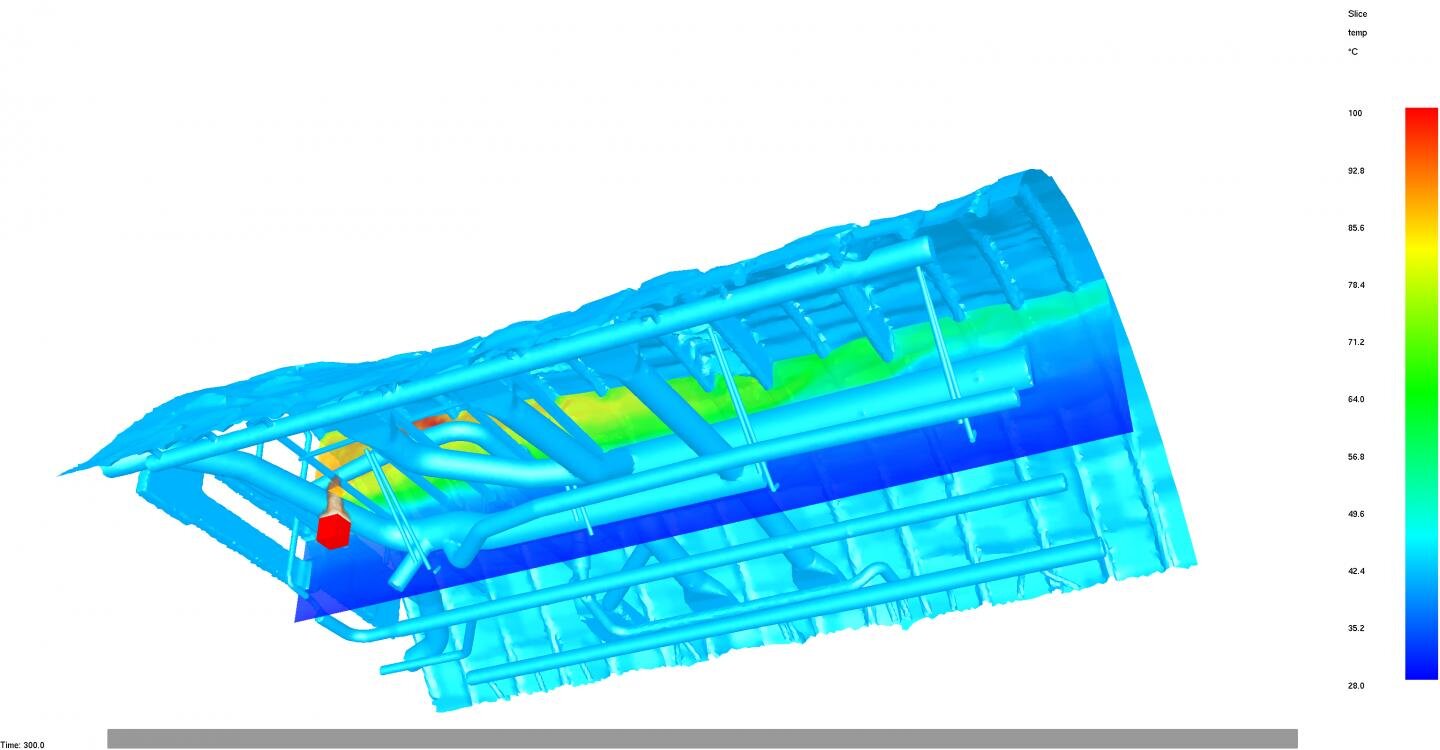#Study finds RNA molecule controls butterfly wing coloration


A team of international researchers has uncovered a surprising genetic mechanism that influences the vibrant and complex patterns on butterfly wings. In a study published in the Proceedings of the National Academy of Sciences, the team, led by Luca Livraghi at the George Washington University and the University of Cambridge, discovered that an RNA molecule, rather than a protein as previously thought, plays a pivotal role in determining the distribution of black pigment on butterfly wings.
Precisely how butterflies are able to generate the vibrant patterns and colors on their wings has fascinated biologists for centuries. The genetic code contained within the cells of developing butterfly wings dictates the specific arrangement of the color on the wing’s scales—the microscopic tiles that form wing patterns—similar to the arrangement of colored pixels to form a digital image. Cracking this code is fundamental to understanding how our own genes build our anatomy. In the lab, researchers can manipulate that code in butterflies with gene-editing tools and observe the effect on visible traits, such as coloration on a wing.
Scientists have long known that protein-coding genes are crucial to these processes. These types of genes create proteins that can dictate when and where a specific scale should generate a particular pigment. When it comes to black pigments, researchers thought this process would be no different, and initially implicated a protein-coding gene. The new research, however, paints a different picture.
The team discovered a gene that produces an RNA molecule—not a protein—controls where dark pigments are made during butterfly metamorphosis. Using the genome-editing technique CRISPR, the researchers demonstrated that when you remove the gene that produces the RNA molecule, butterflies completely lose their black pigmented scales, showing a clear link between RNA activity and dark pigment development.
“What we found was astonishing,” said Livraghi, a postdoctoral scientist at GW. “This RNA molecule directly influences where the black pigment appears on the wings, shaping the butterfly’s color patterns in a way we hadn’t anticipated.”
The researchers further explored how the RNA molecule functions during wing development. By examining its activity, they observed a perfect correlation between where the RNA is expressed and where black scales form.

“We were amazed that this gene is turned on where the black scales will eventually develop on the wing, with exquisite precision” said Arnaud Martin, associate professor of biology at GW. “It is truly an evolutionary paintbrush in this sense, and a creative one, judging by its effects in several species.”
The researchers examined the newly discovered RNA in several other butterflies whose evolutionary history diverged around 80 million years ago. They found that in each of these species, the RNA had evolved to control new placements in the patterns of dark pigments.
“The consistent result obtained from CRISPR mutants in several species really demonstrate that this RNA gene is not a recent invention, but a key ancestral mechanism to control wing pattern diversity,” said Riccardo Papa, professor of biology at the University of Puerto Rico—Río Piedras.
“We and others have now looked at this genetic trait in many different butterfly species, and remarkably we are finding that this same RNA is used again and again, from longwing butterflies, to monarchs and painted lady butterflies,” said Joe Hanly, a postdoctoral scientist and visiting fellow at GW. “It’s clearly a crucial gene for the evolution of wing patterns. I wonder what other, similar phenomena biologists might have been missing because they weren’t paying attention to the dark matter of the genome.”
The findings not only challenge long-standing assumptions about genetic regulation but also open up new avenues for studying how visible traits evolve in animals.
The study, “A long noncoding RNA at the cortex locus controls adaptive coloration in butterflies,” was published on August 30, 2024 in the Proceedings of the National Academy of Sciences.
Luca Livraghi et al, A long noncoding RNA at the cortex locus controls adaptive coloration in butterflies, Proceedings of the National Academy of Sciences (2024). DOI: 10.1073/pnas.2403326121
Citation:
Study finds RNA molecule controls butterfly wing coloration (2024, August 31)
retrieved 31 August 2024
from https://phys.org/news/2024-08-rna-molecule-butterfly-wing.html
This document is subject to copyright. Apart from any fair dealing for the purpose of private study or research, no
part may be reproduced without the written permission. The content is provided for information purposes only.
If you liked the article, do not forget to share it with your friends. Follow us on Google News too, click on the star and choose us from your favorites.
If you want to read more Like this articles, you can visit our Science category.



